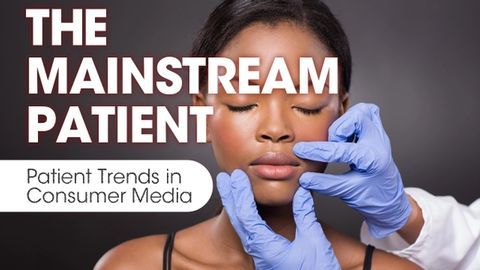- Case-Based Roundtable
- General Dermatology
- Eczema
- Chronic Hand Eczema
- Alopecia
- Aesthetics
- Vitiligo
- COVID-19
- Actinic Keratosis
- Precision Medicine and Biologics
- Rare Disease
- Wound Care
- Rosacea
- Psoriasis
- Psoriatic Arthritis
- Atopic Dermatitis
- Melasma
- NP and PA
- Skin Cancer
- Hidradenitis Suppurativa
- Drug Watch
- Pigmentary Disorders
- Acne
- Pediatric Dermatology
- Practice Management
- Prurigo Nodularis
- Buy-and-Bill
Article
Resolve to Add Humor in 2018
Humor may be subjective, but carefully and respectfully adding it to the practice can help create a positive environment for both doctor and patient.
A new patient scheduled an appointment with Adam Friedman, M.D., F.A.A.D., because she was concerned about sudden onset of hair shedding. In the waiting area, she basically wanted to pull out the rest after she waited several hours for her appointment.
The patient had been misled by the call center, which had told her she would be seen early if she arrived early. She arrived three hours before her scheduled visit, but her name wasn’t called until 10 minutes after her scheduled time. “She was livid,” recalls Dr. Friedman, associate professor of dermatology and residency program director at the Department of Dermatology at George Washington School of Medicine and Health Sciences.
The patient’s frustration wasn’t fixed with an apology or explanation. It was cured by something Dr. Friedman and other dermatologists often keep in their back pockets - a sense of humor. After apologizing, he explained the most common reasons for sudden hair loss were stress-induced events like illness, death, major life changes, new medication … or “waiting to see my goofy face for over three hours.” The patient burst into laughter.
“I think humor is one cornerstone of an effective physician-patient relationship,” Dr. Friedman says. “It is a way to bond over mutual admiration over a funny event or situation, but more importantly, a way to diffuse tension and reduce stress.”
The Power of Laughter
Some physicians have been championing laughter as a form of medical therapy since the 1960s. While current research is insufficient to validate humor’s health benefits, there’s support for the role of humor in patient-physician communication, stress reduction in patients and medical professionals, and even moderating pain.
What role should it play in your practice? After all, humor is subjective (and can be a touchy subject due to each patient’s personality, mood and diagnosis severity - respect comes first). That’s why Neal Bhatia, M.D., F.A.A.D., says, “Joking around with patients takes a little patience, pardon the pun.”
He should know. Dr. Bhatia is part dermatologist, part comedian. He’s director of clinical dermatology at Therapeutics Clinical Research in San Diego; while presenting lectures on new drugs in dermatology, he dons different costumes (newscaster, Civil War soldier, etc.).
“We need more levity and less stuffy PC drama,” he says.
Dr. Bhatia grew up a fan of sketch shows like “SCTV” and “Saturday Night Live.” Today, his dry sense of humor and engaging personality are a hit with patients and colleagues. He says he likes to add “silly jokes or levity when there is something possibly either really boring or concerning to lighten the mood,” and also to add humanity and personality to lectures that include heavy science. During a recent presentation on skin cancer and surgery, he cracked a joke in the middle: “I just thought of a great name for a band of surgeons,” he said, then paused. “Positive Margins!” The room cracked up. During a recent patient visit, he was asked, “How many stitches will it be?” Dr. Bhatia replied in deadpan, “As many as can fit. Well, as many as the HMO pays for.” The patient laughed.
4 Ways to Make Patients Smile
Here’s the bottom line about punchlines: Laughter creates a “positive emotional climate and a sense of connection between two people,” according to Psychology Today. It’s called “the best medicine” for a reason.
No matter if you’re a stand-up comic or a more-stern derm, you still want to create a positive experience for patients at your practice. Here are four things to try:
1. Play kid-safe, amusing videos or shows in the waiting area.
2. Add some lighthearted artwork to the walls.
3. Place a few tasteful joke books or comic books on the waiting room table.
4. Smile more often. Patients and co-workers will notice.



